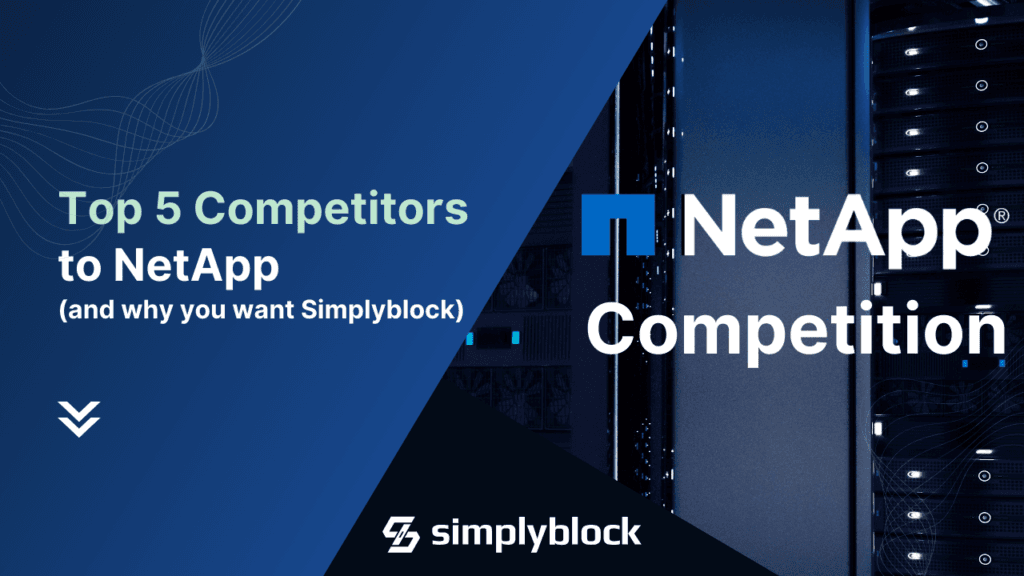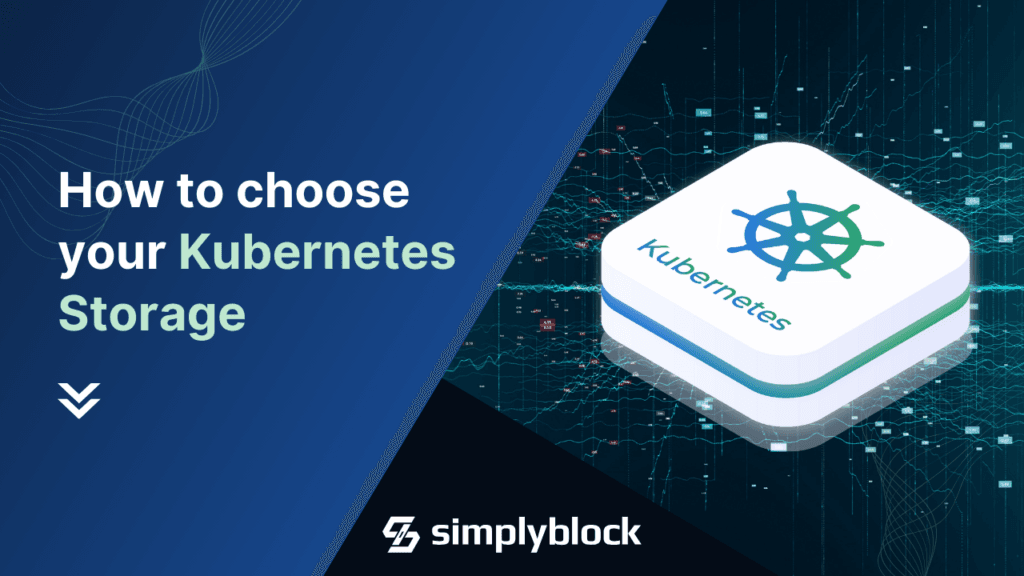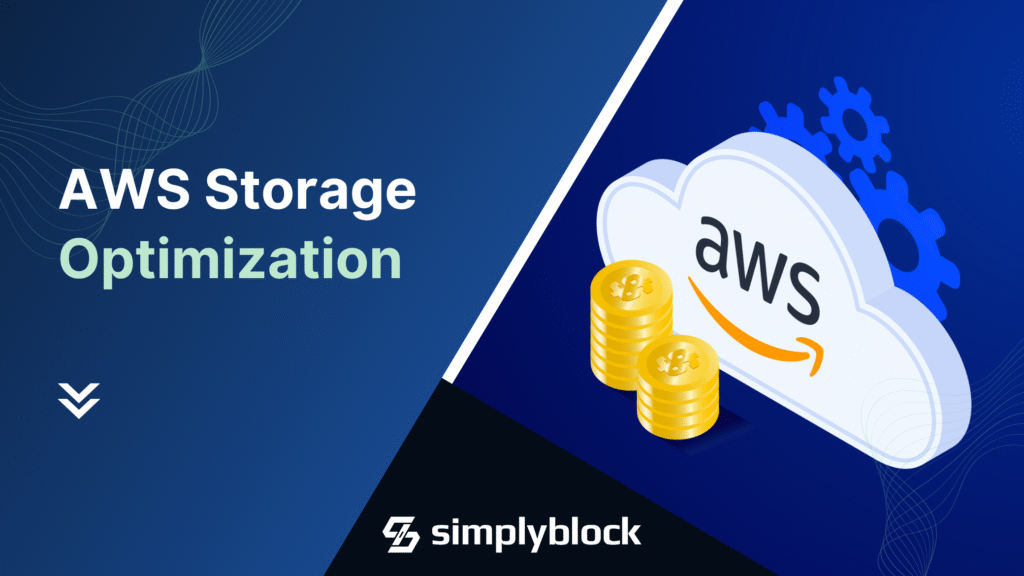
NetApp has long been a staple in enterprise storage, offering a blend of hardware and software solutions that cater to both on-premises and cloud environments. With its ONTAP operating system and a suite of products like FAS, AFF, and Cloud Volumes ONTAP, NetApp provides unified storage solutions that support various protocols and integrate with major cloud providers. However, as the storage landscape evolves, several NetApp competitors have emerged, offering innovative approaches to data management and storage efficiency.
Rethinking NetApp with Simplyblock™
Simplyblock stands out as a high-performance, NVMe-first storage platform designed for modern workloads. It delivers ultra-low latency, high IOPS, and seamless scalability, addressing the limitations often encountered with traditional storage solutions like NetApp in large-scale deployments.
Benefits of Simplyblock:
- Superior Performance: Leverages NVMe over Fabrics (NVMe-oF) to achieve sub-millisecond latency and high throughput.
- Scalability: Supports linear scale-out, ensuring consistent performance as your storage needs grow.
- Advanced Features: Offers distributed erasure coding, application-transparent storage tiering, and DPU optimization.
- Flexibility: Compatible with both ARM64 and x64 architectures, providing versatility across environments.
Why choose Simplyblock over NetApp:
- Enhanced Performance: Achieves higher IOPS and lower latency, crucial for demanding applications.
- Advanced Data Protection: Utilizes distributed erasure coding for efficient and reliable data storage.
- Comprehensive Protocol Support: Full end-to-end NVMe-oF support ensures optimal performance across the stack.
- Future-Ready Architecture: Designed with modular, adaptive, unified, shared-everything (MAUS) principles for modern workloads.
Leading Traditional Storage Providers
While legacy storage vendors have long served enterprise environments, their offerings often come with trade-offs in flexibility, scalability, or cloud-native readiness. Below is an overview of well-known NetApp competitors in the traditional storage space, each with strengths in specific workloads.
Pure Storage
Pure Storage offers all-flash storage solutions known for their simplicity and performance. With its Evergreen Storage model, customers benefit from non-disruptive upgrades and a subscription-based approach. Pure’s solutions are optimized for a variety of workloads, including databases, virtualization, and analytics.
Dell EMC
Dell EMC provides a comprehensive portfolio of storage solutions, including the PowerMax and Unity XT series. These systems are designed for high performance and scalability, catering to enterprise needs across various applications and environments.
Hitachi Vantara
Hitachi Vantara delivers storage solutions that emphasize reliability and data protection. Its Virtual Storage Platform (VSP) offers high availability and performance, suitable for mission-critical applications in enterprise settings.
Fujitsu
Fujitsu’s storage offerings focus on flexibility and efficiency. With systems like the ETERNUS series, Fujitsu provides scalable storage solutions that support a range of workloads, from small businesses to large enterprises.
Breaking Down the Differences in Storage Capabilities
| Feature | Simplyblock | NetApp | Pure Storage | Dell EMC | Hitachi Vantara | Fujitsu |
|---|---|---|---|---|---|---|
| Full Support for K8s-native Architectures | ✅ | ❌ | ❌ | ❌ | ❌ | ❌ |
| High IOPS Density | ✅ | ❌ | ❌ | ❌ | ❌ | ❌ |
| Ultra-Low Latency (Sub-Millisecond) | ✅ | ❌ | ❌ | ❌ | ❌ | ❌ |
| No Proprietary Hardware | ✅ | ❌ | ❌ | ❌ | ❌ | ❌ |
| Linear Scale-Out Performance | ✅ | ❌ | ❌ | ❌ | ❌ | ❌ |
| Advanced (Distributed) Erasure Coding | ✅ | ❌ | ❌ | ❌ | ❌ | ❌ |
| Application-Transparent Storage Tiering | ✅ | ✅ | ✅ | ✅ | ❌ | ❌ |
Moving Beyond NetApp for Scalable Performance
While NetApp has been a reliable choice for many enterprises, the evolving demands of modern workloads necessitate storage solutions that offer greater agility, performance, and scalability. NetApp competitors like simplyblock provide advanced features and flexibility that align with the needs of today’s dynamic IT environments.
Questions and Answers
Competitors like Pure Storage, Dell EMC, and simplyblock are adapting to modern workloads by providing scalable, high-performance storage solutions. Simplyblock, for instance, uses NVMe over Fabrics to achieve ultra-low latency, addressing the increasing demands for fast data access in cloud-native environments, which is becoming crucial for today’s dynamic workloads.
NetApp offers flexibility, but solutions like Pure Storage and simplyblock provide linear scale-out performance, ensuring that performance remains consistent as storage needs grow. Simplyblock’s modular architecture allows for seamless scaling in high-demand environments, making it a strong choice for businesses seeking long-term scalability without sacrificing performance.
Latency is critical for performance, and simplyblock excels with its NVMe-based architecture, delivering sub-millisecond latency, which outperforms traditional storage solutions like NetApp. This low-latency performance is essential for workloads that demand fast data access and high throughput, such as real-time applications and big data analytics.
While NetApp uses traditional data protection methods, Simplyblock integrates distributed erasure coding, offering a higher level of data reliability and fault tolerance. This advanced data protection mechanism allows simplyblock to maintain data integrity during large-scale failures, providing a more resilient storage solution compared to NetApp’s legacy systems.
NetApp offers cloud integration, but is often limited in fully cloud-native environments. Simplyblock, however, supports cloud-native integration with NVMe technology, enabling seamless data access across hybrid and multi-cloud environments. This results in low-latency, high-throughput performance, ideal for workloads running in the cloud or across distributed systems.



